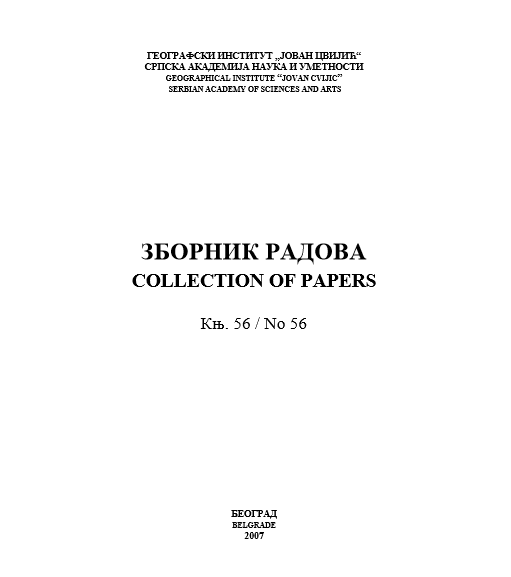FUNCTIONAL AREA OF BELGRADE AND ITS IMPACT ON
VITAL COMPONENT IN THE EXAMPLE OF SETTLEMENTS IN
THE MUNICIPALITY OF STARA PAZOVA
FUNCTIONAL AREA OF BELGRADE AND ITS IMPACT ON
VITAL COMPONENT IN THE EXAMPLE OF SETTLEMENTS IN
THE MUNICIPALITY OF STARA PAZOVA
Author(s): Dragana MatijevićSubject(s): Human Geography, Demography and human biology
Published by: Географски институт »Јован Цвијић« САНУ
Keywords: functional area; demographic polarization; population growth; the municipality of Stara Pazova
Summary/Abstract: One has not still investigated the functional area of Belgrade sufficiently in adomain of domestic urban geography. For that reason, this paper analyzes the territory of the municipality of Stara Pazova as a part of Belgrade functional area, which does not belong to it administratively but connects the main city by firm spatial-functional interactions. The mentioned territory will be analyzed from the aspect of demographic development, i.e. in the example of population growth trend. The negative trend has characterized the dynamics of the vital element development for almost several years. However, even with the declining trend, the natural development of the population on the territory of the municipality of Stara Pazova differentiated in comparison with there maining parts of Srem and Voivodina, owing to the late phenomenon of negativenatural development of the population. Such legality of biological component development firmly connects the geographic legalities of the location and gravitation.The mentioned researches should point out if the territories belonging to the functional area of some town settlements represent the places of the demographic polarization, concentration and territories also differing from the areas that do not belong to the functional area of a town, according to the indicators of the vital trends. The results of the researches should confirm the thesis that urban regions represent relevant factors of the demographic polarity.
Journal: Зборник радова Географског института "Јован Цвијић" САНУ
- Issue Year: 56/2007
- Issue No: 1
- Page Range: 67-76
- Page Count: 10
- Language: English

